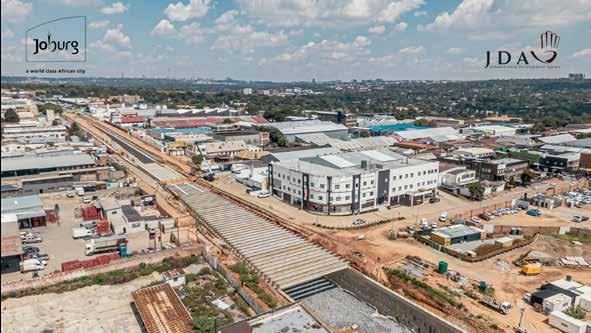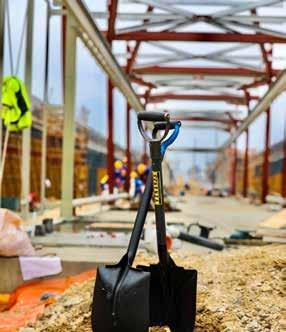
3 minute read
PROFILE Johannesburg Development Agency
WATT INTERCHANGE FOCUS
CATALYTIC TRANSPORT PROJECT SET TO TRANSFORM LOUIS BOTHA
Advertisement
The Johannesburg Development Agency is a wholly owned area-based development agency of the City of Johannesburg with an emphasis on the development of resilient, sustainable and liveable urban areas in identified transit nodes and corridors. This means that as an area-based development agency, JDA is more than just a project management agency or an economic development agency. The Johannesburg Development Agency (JDA) operates within the context of the spatial transformation of South African cities to correct the spatial and systemic inequalities Development. The scope also entails road upgrades, construction of new bridges, and the upgrading of infrastructure services. Construction of the Watt Interchange project, one created by past regimes of segregation. This is the of the City of Joburg’s most significant and complex foremost goal of urban development in the coming infrastructure developments, in terms of scope and years. A more equitable, more just city is one that scale, is changing the overall landscape of Wynberg. extends access to a range of opportunities and services This project is located between Alexandra, an old to all of its citizens. This is aligned to the City of township with a significant place in South Africa's Johannesburg’s Growth and Development Strategy history, and Sandton central, reputed to be the richest (GDS) 2040. spot in Africa, Watt Interchange is bringing about a
One of the JDA’s strategic programme is that of major rejuvenation in the area. Accelerated Infrastructure Delivery, with a sub- The project forms part of the City of Joburg’s Rea Vaya programme titled Urban Infrastructure Delivery which BRT Phase 1c project along the Louis Botha Corridor aligns to the GDS outcome that speaks to providing of Freedom and is currently being implemented by a resilient, liveable, sustainable urban environment the JDA, on behalf of the City of Joburg’s Transport – underpinned by smart infrastructure supportive Department. of a low-carbon economy. One of the development From Arkwright Avenue to Chadwick Avenue along projects that speaks to these outcomes is the Watt Old Pretoria Road, mass earthworks, completed columns Interchange project. and reinforced steel are some of the construction work
This project forms part of the Rea Vaya Phase 1C which can be seen. Superstructures, concrete beams, programme. The scope of works entails construction of lateral support piling and retaining walls can also be a Rea Vaya Bus Station for the Alexandra Community seen making the shape of what will be the most complex and the planned Watt Street Precinct Mixed-Used transport interchange in the Johannesburg region.

The Watt Interchange forms part of the Rea Vaya Bus Rapid Transport (BRT) System, Phase 1C, which includes the trunk route from Sandton to Alexandra along Rivonia Road and Katherine Drive, and the trunk route from Parktown to Alexandra along Louis Botha Avenue. The Watt Interchange will connect, via Mini Bus Taxis, the greater part of Alexandra Township to the Rea Vaya system, important for the integration of the different modes of transport in the city.
From a spatial and nodal development point of view, the rollout of this Phase of the Rea Vaya BRT speaks to the idea of bringing proximity to places of work and schools, easy access to public transport infrastructure for the Citizens of Joburg.
This project will also see the construction of new BRT lanes and an underground station with associated structures, and bulk earthworks. Construction work at the Watt Interchange completed so far includes the demolishing of the previous bridge and the interchange

A more equitable, more just city is one that extends access to a range of opportunities and services to all of its citizens.
at Watt Street, upstand concrete beams, columns for viaduct, allocation and relocation of services construction and retaining wall construction.
Once completed, the Watt Interchange will stand as a high-quality integrated public transport interchange which will consist of the following key elements: • Underground basement loading and off-loading bays • Commuter information area • Designated trunk route • Universally accessible facility
The scale of this development will enable communities of Alex, Wynberg, Sandton and adjacent area to experience a faster, safer, accessible and affordable public transport. The construction of the Watt Interchange links to one of the Government of Local Unity’s strategic priorities to build integrated human settlements through the delivery of sustainable social and economic infrastructure projects.









